Interviews
I am for a fully PR system with a five percent threshold
Leaders don’t want overseas voting because that will swing results in unpredictable ways. But technically, online voting is feasible.
Thira Lal Bhusal
Of late, Nepali Congress leaders have publicly emphasised the need for a change in the current mixed electoral system to ensure political stability in the country. They argue that the two largest parties—the Nepali Congress and the CPN-UML—should now join hands to reform this system. The UML leaders haven’t opposed the idea. The Post’s Thira Lal Bhusal talked to former chief election commissioner Neel Kantha Uprety on such proposed reforms of the country’s electoral system.
Of late, leaders of the Congress have been blaming the mixed electoral system for producing hung parliaments and thus resulting in political instability. Has time come to revisit our election system?
Any electoral system cannot be faulty in and of itself. Its success depends on its users. There is no ready-made electoral system perfect for a particular country. Also, there are no textbook models we can instantly employ. You must factor in fundamental realities of a society while picking and implementing an election system. Voters’ education level and experience, the country’s economic parameters, its social composition mainly of ethnic communities and also the geography are to be considered while coming up with an electoral modality. We have to create a strong foundation and lay the ground to put that design into practice. The role of actors is vital in this process.
Our election system has evolved in the past seven decades. We introduced the multiparty election system in our first parliamentary election in 1959. We, however, had practised electing representatives through voting in different forms even before that. In 1959, we imported the multiparty election system from India. It arrived in our neighbouring country from the United Kingdom during the colonial period. We practised the same electoral system in three multiparty democratic elections after the restoration of democracy in 1990.
We imported the system as it was, without modifying it to suit our reality. It was only after the success of the 2006 People’s Movement that people strongly demanded that the electoral system be reformed to ensure representation of historically underrepresented sections of society. Inclusion was a demand of the movement. In the elections previous to that we had failed to ensure candidacy, election and representation of women, and those from marginalised and backwarded groups and communities. Then the issue of ensuring election of diverse communities to the Constituent Assembly and their participation in the constitution making process became a major agenda.
The election of the first CA had to be postponed multiple times due to major parties’ differences over electoral provisions. Eventually, all sides agreed to adopt a mixed electoral modality consisting of the first-past-the-post (FPTP) and the proportional representation (PR). It was introduced in the first CA polls. Women and various historically underrepresented groups made it to the CA. It was in fact a leap forward in representation. Only the FPTP electoral system wouldn’t have created this inclusive picture. So, the credit for the present inclusive representation goes to the PR system. But our leaders have tried to shift the blame for political instability to the electoral system.
When it comes to the question of whether time is ripe to revisit the electoral system, we should remember that we adopted this system in the course of post-conflict management. Some countries have employed multiple electoral systems successfully. Take South Africa. After the end of apartheid in early 1990s, it adopted a fully proportional representation electoral model. The system has helped them manage the conflict properly. It has given them majority governments. Conversely, in our case, political parties and leaders misused our mixed system. If it is to be revisited, let’s do it in a way that would remove anomalies seen in the mixed system. We should mainly have a provision that bars actors’ [leaders’] manipulation of the system.
What anomalies of the mixed electoral system have been seen in the past four elections and how can we remove them?
There were electoral anomalies in previous systems as well. But at the time we were happy that the country had democracy and we didn’t bother about other things. In the new system, leaders misused the seats allocated under the PR category. They used it against its spirit of ensuring proportional representation of all communities and groups. Powerful leaders used this system to promote their family members, those loyal to them and even sold the seats to well-off people. Moreover, they put the names of their close ones on top of the list to boost their election chances.
How successful has the system been in ensuring representation of historically marginalised groups?
It has succeeded to an extent. For example, women have been elected in around one-third of the total seats in federal parliament. The representation in local units is even better. However, their representation is weaker when it comes to the decision making positions. Dalits representation has increased but it is still not in proportion to their population. This is also so for other marginalised communities. It became possible only after the mandatory legal provisions.
Political leaders have manipulated the system to promote their closed ones to positions even under women, Dalit and other categories. Is it due to legal loopholes? Can a law completely stop leaders from doing so?
No law can ensure that. It is because of the leaders’ bad intent, which cannot be mended. We have to find a solution from within the system.
What will such a solution look like?
No system or law will work unless the political parties, candidates and voters correct themselves. Many prefer the FPTP system as under it unscrupulous candidates can buy candidacy as well as voters and win elections. Rich candidates even buy out other candidates who don’t have enough money to fight elections. Some politicians reportedly spent over Rs100 million to become mayors and tens of millions to be ward chairs as they take it as an investment to earn more. Therefore we have to go for a fully PR system.
But will a fully PR system not give leaders even more room to handpick their near and dear ones?
There should be a provision to select candidacy through primaries, and leaders should not get to handpick candidates. Party members from respective areas would select their candidates with options through voting. The Election Commission will conduct the primaries as well. And the proportional representation method should be applied at the local level itself while selecting the candidates, so that the PR system can be implemented ground-up. Thus the candidates themselves will be fully inclusive as per the social composition of the respective area or constituency. But, at present, votes are collected from across the country and all candidates are picked from the centre, as the current PR method takes the entire country as a single constituency.
Some have proposed to make the FPTP system more inclusive by allocating certain constituencies for women, Dalit and other clusters. What is your view on it?
Yes, there is that school of thought. But it can’t be done permanently, so the constituencies are fixed on a rotation basis. Some countries including India are trying to implement it, but it hasn’t given expected results.
Some others are for electing all the National Assembly members through the PR system and all the lower house members through the FPTP. Is such an arrangement feasible?
That is meaningless as lower house representation is important in every respect. Political parties and leaders have already made the upper house a chamber to place their closed ones as well as those rejected in elections.
There is one more proposal to increase the threshold to qualify to get the PR votes, which would help big parties accumulate more votes and secure more seats. Is that the right approach?
We find thresholds of up to 10 percent in some countries. Our threshold should be increased. Let’s go for a fully PR system and increase the threshold to at least five percent. Why do we need so many political parties? While there are just a couple of political parties active in developed countries, why are over 100 parties registered in a poor country like Nepal? Are there so many political philosophies requiring so many parties?
Why keep changing election systems even as developed countries have been using the same system for a long time?
In fact, the present system is a complex one. Fully PR system will be easier and less expensive. The Election Commission’s expenditure will come down by 40 percent. The expenses of political parties and candidates will also be drastically reduced.
But won’t this bar the entry of popular leaders in parliament and make the top leaders of political parties more powerful?
No, those who are unpopular will be filtered out from their area in the primaries. Only those selected from the primaries will be eligible for inclusion in the PR list. Party members elect candidates of their respective party, not the leaders. Such candidates will be inclusive based on the social composition of the same place.
Leaders have pledged voting rights for Nepalis abroad. How feasible is it?
It is feasible, if the leaders really want to do it. But they don’t. See, election results are mostly decided by small margins. Here in the country, the leaders work hard to convince swing voters. The votes from overseas will be more unpredictable as it won’t be easy to contact and convince Nepalis staying in over 100 countries. They are out of local politicians’ control and can’t be influenced based on local dynamics.
So, the leaders don’t want overseas voting because that will swing the result in unpredictable ways. Technically there is no problem with online voting. People are sending and receiving money through their mobile on the basis of OTP numbers. Those staying abroad can be connected to their booths at their respective villages through the internet. They can vote through their mobile and the list will be updated at the booth automatically.




 7.12°C Kathmandu
7.12°C Kathmandu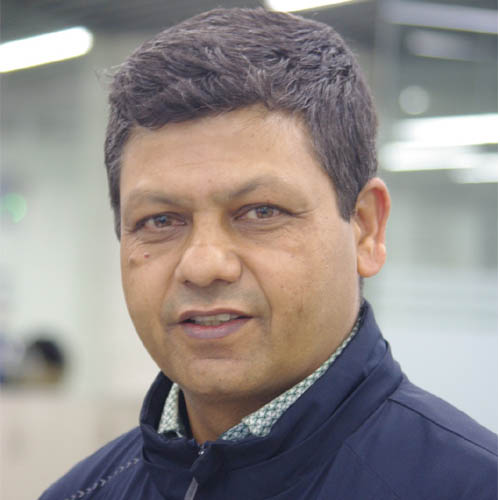
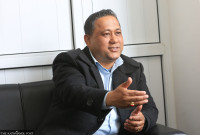

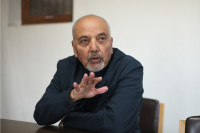


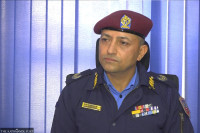
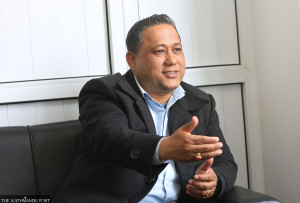



%20(1).jpg&w=300&height=200)

